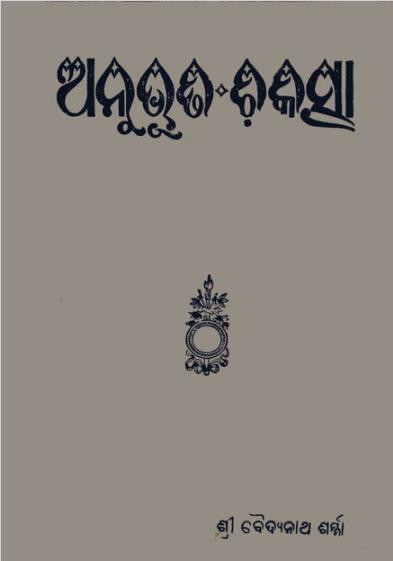In the realm of Odia literature, the year 1934 saw the publication of a remarkable work titled Anubhuti Chikitsa by Baidyanatha Sharma. This book stands as a significant contribution to the field of general knowledge, particularly in the context of health and wellness, and reflects the evolving understanding of these topics in early 20th-century India. Through its comprehensive approach, Anubhuti Chikitsa has served not only as a resource for education but also as a guide for practical living.
The title Anubhuti Chikitsa translates to Experiential Medicine, suggesting a unique blend of personal insight and scientific knowledge in the realms of health and healing. Baidyanatha Sharma, with his rich background in medicine and traditional healing practices, approaches health from both a scientific and experiential perspective. This dual approach allows the reader to appreciate the importance of both empirical knowledge and personal experience in understanding health and wellness.
Sharma’s work is notable for its extensive coverage of a variety of health-related topics, including anatomy, physiology, common ailments, preventive measures, and traditional treatment methods prevalent in Odisha. By integrating local knowledge with contemporary medical practices, Anubhuti Chikitsa bridges the gap between traditional and modern medicine. This makes the text not only useful for medical students and healthcare professionals but also accessible to the general public interested in improving their health literacy.
One of the standout features of Anubhuti Chikitsa is its focus on preventive healthcare. Sharma emphasizes the importance of lifestyle choices, nutrition, and mental well-being in maintaining good health. This holistic view aligns with the growing awareness of preventive medicine during the 20th century. By promoting healthy habits and encouraging readers to take charge of their own health, Sharma’s message remains relevant in today’s fast-paced world. He advocates for a balanced approach to life, where physical, mental, and emotional well-being are interconnected.
Furthermore, the book is written in a clear and engaging style, making complex medical concepts accessible to readers without a formal background in medicine. Sharma’s ability to communicate effectively resonates with a broad audience, emphasizing the idea that health knowledge is not the privilege of a few but is essential for everyone. This democratization of knowledge is particularly significant in the context of early 20th-century India, where access to educational resources was often limited.
Published during a time of significant social and political change in India, Anubhuti Chikitsa reflects the aspirations of a society seeking to reclaim its health narrative. At a time when colonial influences affected various aspects of life, including health practices, Sharma’s work emphasizes the value of indigenous knowledge systems and encourages pride in traditional healing methods. By documenting these practices, Sharma plays a crucial role in preserving the cultural heritage of Odisha and promoting a sense of identity.
Moreover, the impact of Anubhuti Chikitsa extends beyond its immediate educational value. It has influenced subsequent generations of healthcare providers, educators, and readers, paving the way for a more informed public discourse on health and wellness. As society continues to grapple with health challenges, revisiting Sharma’s insights can offer valuable perspectives on resilience, self-care, and the importance of community support in maintaining well-being.
Books Info
| Books name | Anubhuti Chikitsa / ଅନୁଭୂତି ଚିକିତ୍ସା |
| Author | Baidyanatha Sharma |
| No Of pages | 154 |
| Publisher | Kabiraja Sri Baidyanatha ma |
| Publication | 1934 |
| Printed At | Sarada Press |
| Distributor | NA |

